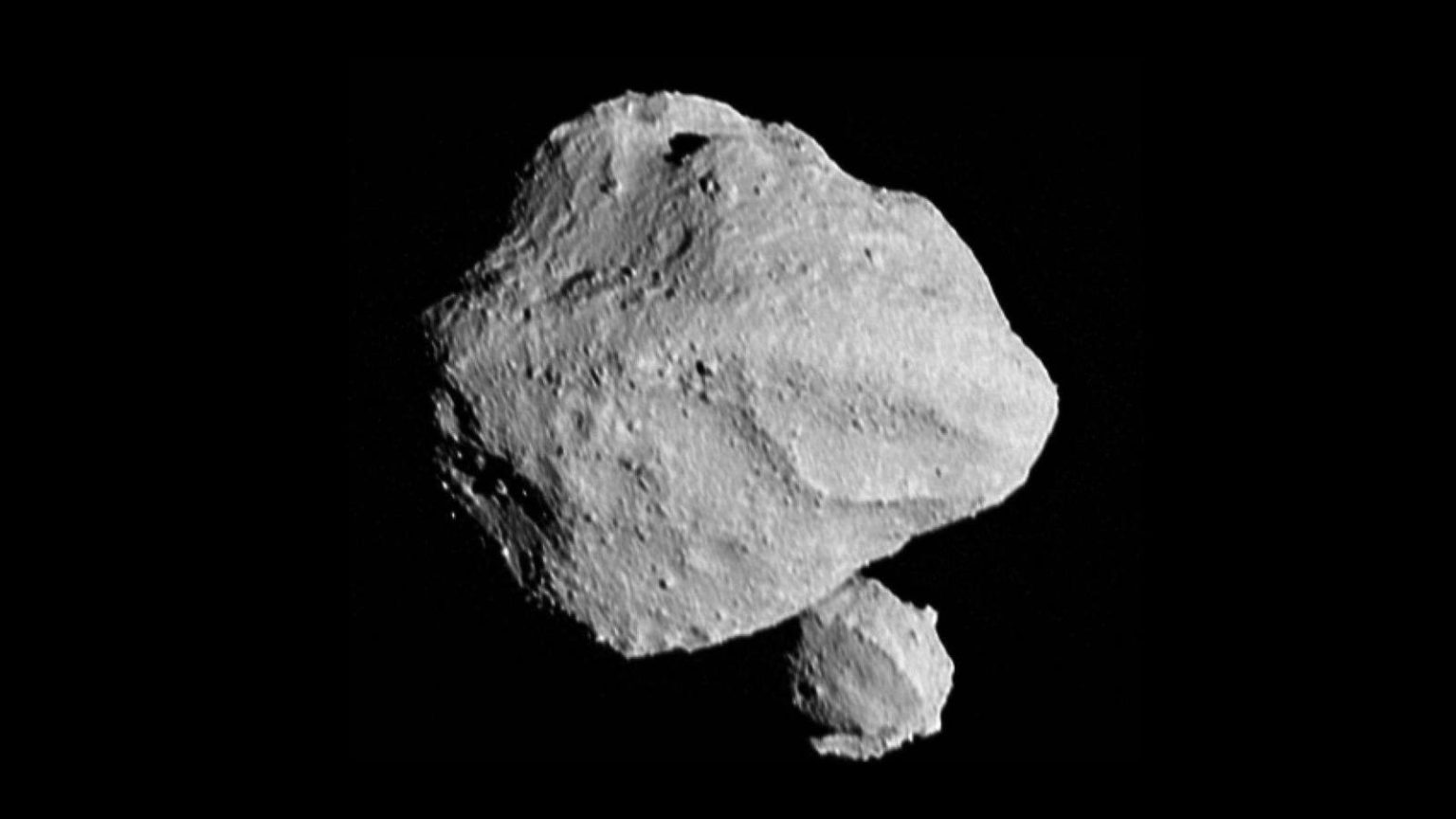When NASA’s Lucy spacecraft conducted a flyby of a small asteroid this week, it got more than engineers bargained for when a second asteroid—a moonlet—popped into view.
The planned first asteroid encounter of a predicted 11 for the spacecraft over the next 10 years, Lucy got to within 265 miles (425 kilometers) from the surface of the small asteroid Dinkinesh at 12:56 p.m. EDT (1655 UTC) November 1, 2023.
However, in an image sent back by Lucy over NASA’s Deep Space Network, it’s evident that Dinkinesh is a binary asteroid. NASA estimates that the main asteroid is about 0.5 miles (790 meters) at its widest, while the smaller is about 0.15 miles (220 meters) in size.
The image is from the Lucy Long-Range Reconnaissance Imager (L’LORRI), a black and white camera strapped to the probe, which is about as long as a bowling lane. It launched on October 16, 2021. As it took its first asteroid images this week, it was moving at 10,000 mph.
Reflective Clues
The binary nature of Dinkinesh wasn’t a complete surprise. Researchers had used 13-year-old infrared data from NASA’s Wide-field Infrared Survey Explorer (WISE) to estimate the asteroid’s size and albedo—how reflective its surface is—and from new data from Lucy’s instruments as it approached Dinkinesh noticed that the latter fluctuated slightly.
“We knew this was going to be the smallest main belt asteroid ever seen up close,” said Keith Noll, Lucy project scientist from NASA’s Goddard Space Center in Greenbelt, Maryland. “The fact that it is two makes it even more exciting.”
Dinkinesh resides in the inner Main Asteroid Belt between Mars and Jupiter.
Jupiter’s Children
Lucy’s primary mission is to study Trojan asteroids, the ancient remnants of the early solar system clustered in two “swarms” leading and following Jupiter in its path around the sun. They’re sometimes called called “Jupiter’s children.”
Here’s the schedule of asteroid flybys, according to NASA:
- April 20, 2025: Donaldjohanson (asteroid in the Main Asteroid Belt between Mars and Jupiter)
- August 12, 2027: Eurybates and its satellite Queta (Trojan asteroid)
- September 15, 2027: Polymele and its yet-unnamed satellite (Trojan asteroid)
- April 18, 2028: Leucus (Trojan asteroid)
- November 11, 2028: Orus (Trojan asteroid)
- March 3, 2033: Patroclus and its satelitte Menoetius (Trojan asteroid)
Lucy In The Sky
NASA named the Lucy spacecraft after the fossilized human ancestor discovered in Afar, Ethiopia in 1974. The skeleton was discovered in sediment known to be 3.2 million years old by paleoanthropologist Donald Johanson, who played a Beatles cassette that night at camp, including the song “Lucy in the Sky with Diamonds.” So Johanson decided to name the skeleton Lucy.
Lucy’s next asteroid target, which it’s due to flyby on April 20, 2025, is named after that paleoanthropologist.
Fittingly, the Lucy spacecraft contains a plaque that will act as a time capsule containing messages for our descendants. The time capsule contains messages from the likes of Albert Einstein, Carl Sagan, Martin Luther King Jr. and all four members of The Beatles.
The spacecraft will orbit the sun six times on its mission but ultimately travel between the Trojan asteroids and the orbit of the Earth for millions of years.
Wishing you clear skies and wide eyes.
Read the full article here





